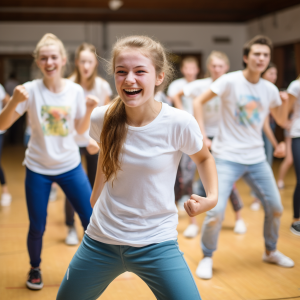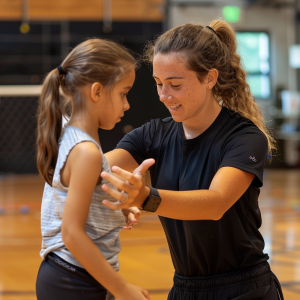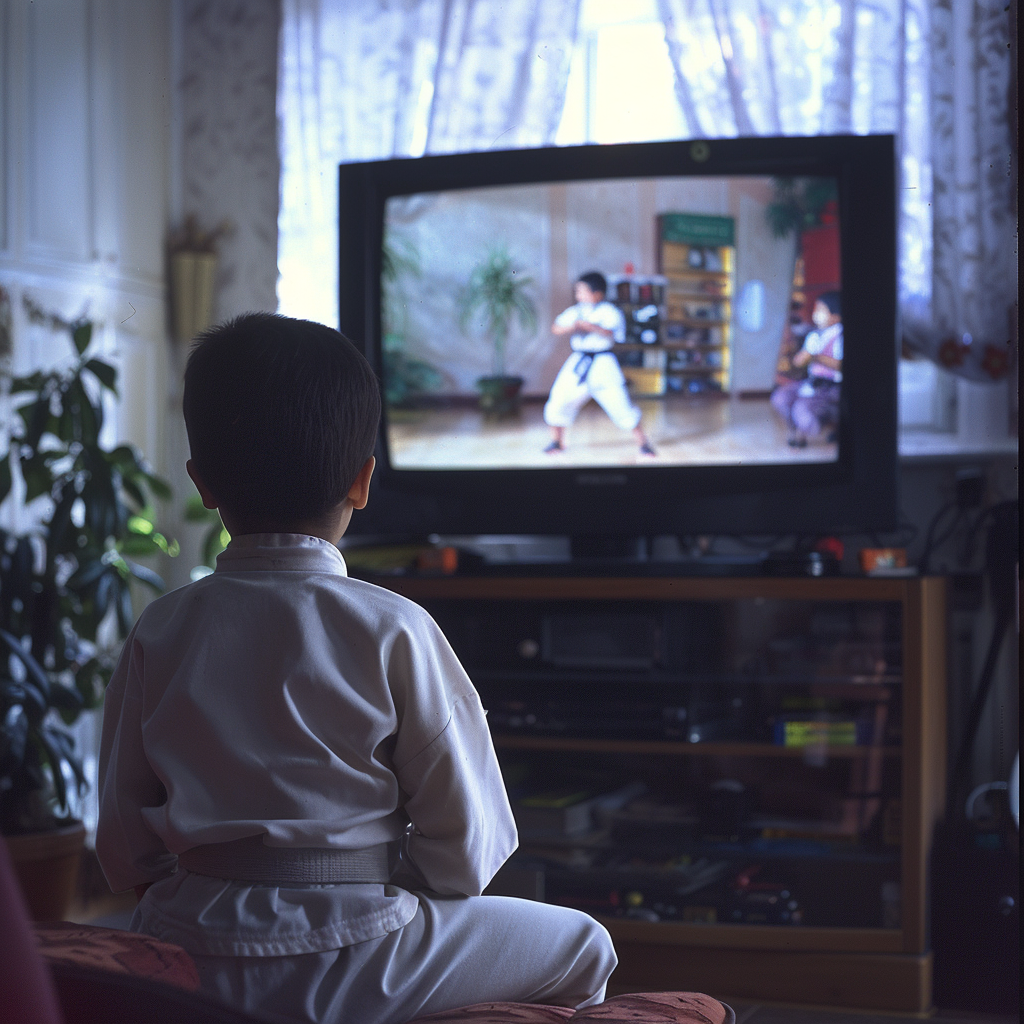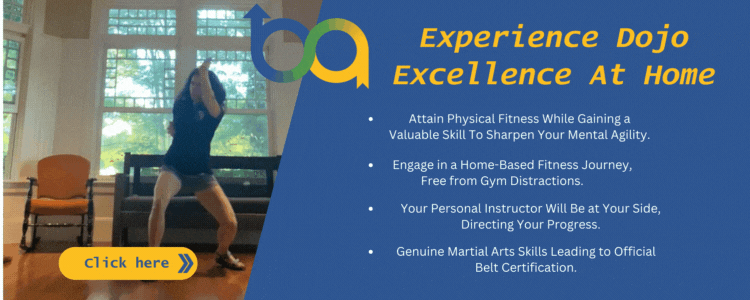 In recent years, the medical and behavioral science community has increasingly recognized the value of integrating diverse and multidisciplinary approaches to support neurodivergent individuals.
In recent years, the medical and behavioral science community has increasingly recognized the value of integrating diverse and multidisciplinary approaches to support neurodivergent individuals.
Among these innovative strategies, martial arts have emerged as a powerful tool to enhance both physical and mental/emotional outcomes in a therapeutic environment, specifically in those with autism spectrum disorder.
“Study findings demonstrated that martial arts-based interventions (internal and external styles) had positive influence on ASD-related symptoms (e.g., social interaction/communication skills, self-regulation, memory, postural control, and cognitive function) with effect size ranging from medium to high” (Zou, 2017).
Dr. E. Paul Zehr, a sensorimotor neuroscientist and martial arts practitioner, stated that the usage of martial arts for therapeutic purposes in neurodivergent individuals is not only validated through research but also anecdotal evidence; he also validates its worth through the dramatic changes he has witnessed personally as a martial arts instructor (Psychology Today, 2012). Additionally, Dr. Zehr advocates for further research on this because of how dramatically it seems to positively affect those who experience sensory, executive, and motor function challenges (Psychology Today, 2012).
He goes on to also state that he believes there is a direct connection between the traditional instruction of martial arts and how that information is absorbed and retained: specifically, through mimicry or modeling.
“…the use of an external movement pattern (repetitive motions within martial arts instruction) becomes the context that is now used to frame the subconscious brain activity of the person doing the training. In this way externally cued movement triggered by visual motor learning winds up changing motor related brain activity. This changes overall brain function…”
Knowing that research supports utilizing martial arts as a supplement to existing therapeutical regimens in neurodivergent individuals, what is the best way to integrate it and is there one program that’s more effective than another?
What Makes an Effective Martial Arts Program?
At the risk of sounding cliché, not all martial arts programs are built alike.
While they may hold the same foundation of tradition and technique, many are grounded in different instructional concepts while others simply focus on self-defense.
When discussing the therapeutic benefits of martial arts, it’s important to remember the unique learning needs of neurodivergent individuals. As we mentioned previously, many find success through visual learning cues. One effective method of instruction that stands out in this context is video modeling.
Video modeling leverages visual learning, which is often a strength for neurodivergent individuals, including those with autism spectrum disorder (ASD). This approach in the context of martial arts would provide clear, consistent demonstrations, allowing learners to observe and imitate the movements at their own pace. As Dr. Zehr stated, the partnership of visual retention and simultaneous demonstration from the students seems to stimulate motor related brain activity and disrupts many damaging behaviors that many neurodivergent individuals experience (Psychology Today, 2012).
“Empirical research supports video modeling as an effective pedagogical procedure that may produce quick skill acquisition. (It has also) supported video modeling as a prompting procedure that can maintain skills over time…(while also) proving successful in increasing complex response sequences” (Behavior Analysis in Practice, 2016).
Video modeling reduces the complexity of live instruction and eliminates the pressure of immediate performance, creating a more accommodating and less stressful learning environment. Those who experience extreme anxiety or discomfort when in groups can thrive under the concept of video modeling, especially in martial arts.
Additionally, the repetitive nature of video modeling reinforces muscle memory and cognitive understanding, which is especially beneficial for those who benefit from routine and repetition. By integrating video modeling into martial arts instruction, therapists, coaches, and caregivers can enhance accessibility and effectiveness, maximizing its therapeutic potential.
Traditionally, many behavioral and medical providers may hesitate to adopt martial arts due to the need for additional resources. Ideally, a program should be universally adaptable and easy to understand, accommodating individuals of all abilities without requiring anything extra.
Our program stands out as the optimal choice because we offer ‘tool-kit therapy,’ serving as a comprehensive solution or one-stop shop for learning martial arts without the requirement of investment in additional resources.
Integrating ‘Tool-Kit’ Martial Arts
When our team at Believing Through Achieving recognized the dire need for this program – accessible martial arts that is not only self-paced but adaptable and affordable – we created our nonprofit to extend our reach to anyone that could utilize it.
Our step-by-step online video modeling-based instruction is not only flexible, but easy to understand and implement. We know that it’s not always possible to integrate a new program into existing therapies/regimens, so we aimed to create a platform that requires no additional resources…just the student’s investment of time.
Our ‘tool-kit therapy’ approach streamlines the integration of martial arts into existing therapeutic practices without requiring the traditional “extras” (scheduled classes, additional instructors, etc.). This ensures that our program is not only adaptable for individual needs but also scalable for various settings—from one-on-one sessions at home to group sessions in community centers.
In addition, by leveraging the proven effectiveness of video modeling for instruction, our online platform offers comprehensive, 24/7 access to structured lessons designed by top instructors. This accessibility not only supports busy parents but also does not disrupt the structured schedules of behavioral therapists and caregivers. It’s a solution that maximizes therapeutic benefits while minimizing logistical challenges, making it an ideal choice for enhancing wellness and development.
Our program has eliminated the barriers for many individuals to begin training in martial arts: transportation issues, schedule conflicts, anxiety concerns with learning in a group class environment, and more…and with our nonprofit status and the generosity of our donors, we are pleased to accommodate learners from across the country.
Martial arts offer a unique blend of physical, mental, and emotional benefits that can be particularly advantageous in therapeutic settings. These practices promote mindfulness, self-discipline, and physical coordination, all of which are crucial for the development and well-being of neurodivergent individuals.
Our ‘tool-kit’ approach allows practitioners to selectively incorporate elements of martial arts into their therapeutic modalities where and when it fits best for them. This flexibility ensures that the instructional material can be tailored to meet the specific needs and capabilities of each client, making them a practical addition to any therapeutic arsenal.
 The versatility of our martial arts program means that it can be seamlessly integrated into a variety of therapeutic practices without requiring extensive training, certification, or additional resources. Therapists, coaches, and caregivers can learn and apply basic principles and exercises through simply viewing our online instructional videos and working with their clients.
The versatility of our martial arts program means that it can be seamlessly integrated into a variety of therapeutic practices without requiring extensive training, certification, or additional resources. Therapists, coaches, and caregivers can learn and apply basic principles and exercises through simply viewing our online instructional videos and working with their clients.
By doing so, they can create a holistic, comprehensive, and dynamic therapeutic environment that fosters growth, resilience, and empowerment in any individual.
Martial arts do not have to be inaccessible and difficult to attain – with our ‘tool-kit’ therapy platform, anyone can learn techniques wherever and whenever is most convenient for them. Setup a consultation with our team to learn how to implement it in your environment today!
https://btateam.org/consultations/
References
Aldi C, Crigler A, Kates-McElrath K, Long B, Smith H, Rehak K, Wilkinson L. Examining the Effects of Video Modeling and Prompts to Teach Activities of Daily Living Skills. Behavior Analysis in Practice. 2016 May 20;9(4):384-388. doi: 10.1007/s40617-016-0127-y. PMID: 27920969; PMCID: PMC5118254.
Zehr, E. Paul. (2012). Martial Arts and the Autism Spectrum. Psychology Today. Retrieved from https://www.psychologytoday.com/us/blog/black-belt-brain/201211/martial-arts-and-the-autism-spectrum
Zou, Liye. (2017). Martial arts for health benefits in children and youth with autism spectrum disorder: A systematic review. Archives of Budo. 13. 79-92.

